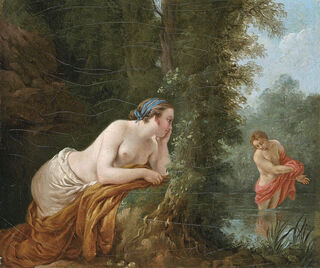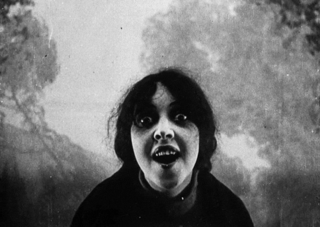Narcissism
Using Monster Myths to Understand Narcissism
What the "undead" reveal about living a better life.
Posted June 9, 2022 Reviewed by Lybi Ma
Key points
- All humans have some narcissistic tendencies.
- "Toxic" is just a synonym for narcissistic.
- Monster myths exist in all cultures to teach the understanding of narcissism.
- We can learn principles in folklore that teach mature character virtue to counter narcissism.
In a psychiatry lecture some 30 years ago, Dr. Horacio Fabrega, Jr., a medical anthropologist and professor, described his study of human experiences uncommon in other fields. A compelling example was how vampires and other monster myths exist in every culture and throughout history—a joining of psychology and folklore that reveals more than either one can, alone.
He said such stories are instructive of what might be the most crucial question in behavioral science or culture: What can we do about narcissism?
Self Psychology teaches us that all humans possess at least some narcissism beginning in childhood, although the most severe state—pathological narcissism and narcissistic personality disorder)—is quite rare.
If every culture organically develops folklore that teaches what narcissism is, then it stands to reason they are also guides to mature character virtue, narcissism’s cure.
The wolf of Little Red Riding Hood teaches us how the narcissism in others can be hidden in plain sight, seemingly benevolent, all while manipulating others and deluding the self.
The alternating kindness and cruelty of Dr. Jekyll and Mr. Hyde teach us how the narcissism already in us can weaken our better angels over time, even to the point of (Dr. Jekyll’s) suicide.
Stories serve cultures as a salve for this universal malady that plagues humanity with crime, war, and unhappiness.
Fabrega hooked many of us on how art, literature, and science could conspire to meet that behavioral challenge of our times: not just how we identify narcissism in others, but how to alleviate it over our lifetimes.
Monsters, Toxicity, and Narcissism
Today we are inundated by media about narcissism with unscientific synonyms for it, such as toxicity. None of the differences between our immutable human traits are inherently toxic because our inborn traits aren’t the locus of narcissism. We are all narcissistic to some degree in our character, and we are all also capable of change for the better through the growth of character.
It may be helpful to simplify the innumerable rules and contradictory advice about all those toxic people hiding around every corner, to turn away from spotting narcissism and instead toward growing and spreading its benevolent opposite, mature character virtue.
While monster myths predate the seminal works of Heinz Kohut’s Self Psychology by thousands of years, the everyday accessibility of stories of vampires and other monsters can translate the language of academia for us.
Kohut (1978) posited that we all encounter growth experiences called self-object needs as we go through psychological development. These he viewed as positive, healthful, and natural for our growth out of the universal narcissism of childhood.
In narcissistic mirroring, we have a deep need to receive affirmation of our worth, that we are valuable and lovable. Meanwhile, the vampire-as-narcissist looks in mirrors to see nothing there: empty of self-esteem and authentic identity under a mysterious, false strength.
The namesake of narcissism comes from the figure Narcissus, who gazed in the water at his own image, never to be satisfied in this mirroring. He doesn’t want to see the ugly truth not reflected there: he is starving the girl, Echo, of love. His failure to hear her words eventually eats away at the authenticity of her voice until only the disembodied repetition of his own words remains of her.

Our inherent narcissism hurts others, and ourselves, depriving us of the very lifeblood of happiness: genuine love.
In narcissistic idealization, we need to see meaningful others as heroes, stronger and wiser than us. We absorb their beliefs, values, and aspirations as a starting point for achieving happiness and success.
The genuine love of parents may go smoothly, but for those of us without this advantage, foraging for words of encouragement, morsels of care and commitment can feel like survival—food and water for the Self.
In a vampire myth, “thirst for blood” represents this survival need, symbolic of the self-esteem that the vampire, or narcissist, lacks.
Catriona Helen Miller (1998) says that “vampires are numinous and glamorous, but at the same time, repulsive,” while Self Psychology points out that the charm and power of the narcissist belies a hidden inner deficit of self-esteem or worthiness of love.
In narcissistic twinship, we grow autonomy as adults with our own unique identities. We find commonalities with our mentors, and it is through shared traits we learn to love and have faith in ourselves, capable of navigating our own path through hardships—fulfilling our life goals and dreams someday.
Conversely, many monster stories have a contagion aspect, where through touch or sight, we too can be “infected” with that which is narcissistic or monstrous.

Like vampires can duplicate themselves in us through a bite, social media facilitates turning as destructively critical of others as they are of us—biting sarcasm and shame instead of what we would have instead needed: mutually constructive, generous mentors enlightening each other.
What “intellectual discourse” formerly embodied.
Turning Monsters Back to Humans
We can find the essential elements of mature character virtue in the talismans and protective spells of monster stories:
Mentalization – the mindfulness of a present-minded, sensory state, without which we can’t pay enough attention to change and growth out of narcissism.
We see this in the smell of garlic warding off the vampire and his sight of a crucifix causing him to cower. Similarly, the soft daylight of truth may transform the fear of seeing our shortcomings in the mirror held by others—encouraging us to see how much more work we need to do on our character and for which we need to be forgiven by each other.
Personal Boundaries – the limits and preferences set with others, the self-discipline to adhere to that which is just, fair, and advantageous for all, yet are unique to our identity and goals.
Accepting the limits and discipline of mentors proven to be kind to us may transform the harmful idealization that craves an insatiable self-esteem boost, and drives our control of others.
Constructive Decisions – the wisdom and goodwill toward others that organically also benefit us, a “rising tide lifting all boats,” can turn the destructive “contagion twinship” of Jekyll and Hyde into a “protective twinship” of the Woodsman for Red Riding Hood.
The next time you enjoy a story of heroes and villains, consider the symbolism in the hero’s unique tools and principles they stand for. They might hold inspiration on what to do to humanize the dead-end of toxicity in everyday conflicts.
In Memoriam, Horatio Fabrega, Jr. M.D.
References
Catriona, Helen Miller (1998). “Blood Spirits: a Jungian Approach to Vampire Myths”. Doctoral Thesis, University of Stirling, Scotland.
Kohut, H., & Wolf, E. S. (1978). “The disorders of the Self and their treatment: An outline”. The International Journal of Psychoanalysis. 59(4), 413–425.
Fabrega, Jr., Horacio, Miller, Barbara D. (1995). “Toward a More Comprehensive Medical Anthropology: The Case of Adolescent Psychopathology”. Medical Anthropology Quarterly. Vol 9, Issue 4, pp. 431-461.




